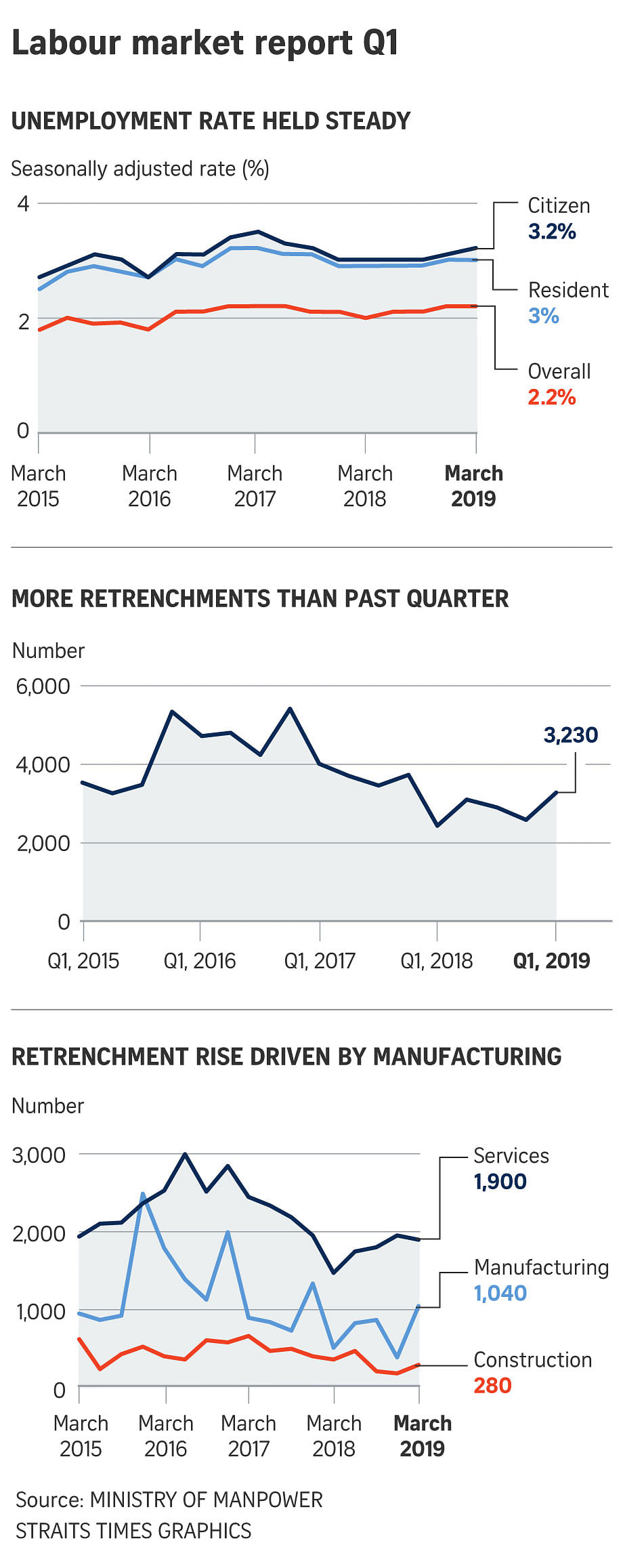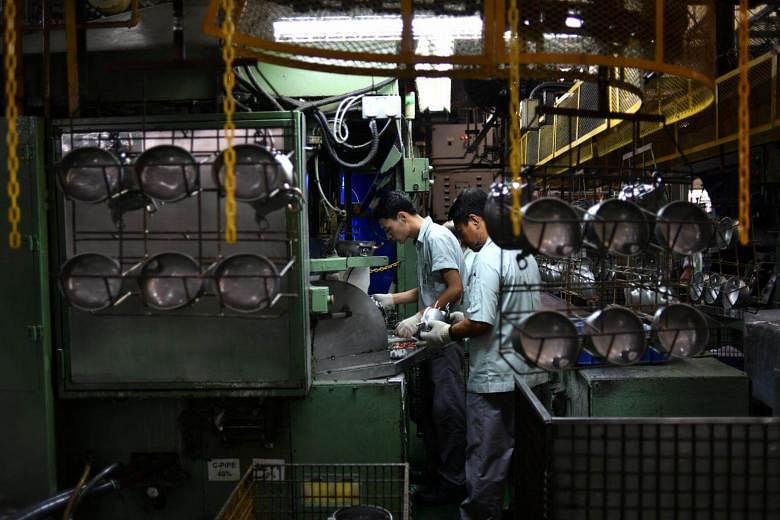SINGAPORE - Retrenchments rose in the first quarter of the year, driven by manufacturing losses and hitting mainly production and related workers from electronics, said the Ministry of Manpower (MOM) on Thursday (June 13).
The number of retrenched employees stood at 3,230, up from 2,510 in the previous quarter and also higher than a year ago, the MOM said in its labour market report.
Retrenchments in electronics made up 18 per cent of the number, followed by services industries such as wholesale trade, as well as transportation and storage.
"While restructuring and reorganisation remained the main reason cited by establishments for retrenchments, there was a rise in the share of retrenchments from the previous quarter due to high costs and the downturn in the industry," said the MOM.
It added that among retrenched residents, professionals, managers, executives and technicians (PMETs) continued to make up the majority at 69 per cent. This is because they form a higher share of the workforce and were more prone to retrenchments, the MOM added.
Total employment continued to grow by 10,700 excluding foreign domestic workers, driven by the services sector, and higher than a year ago.
But employment dipped in manufacturing for the second consecutive quarter, led by cutbacks in electronics. The electronics cluster posted its largest employment contraction in six years.
Maybank Kim Eng economist Chua Hak Bin said he expects companies to be more cautious in hiring for the rest of the year, given the escalating trade war between the United States and China.
"Employment growth will likely slow while manufacturing employment will likely remain in contraction for the rest of the year," he said, noting that labour statistics are lagging indicators and that the US more than doubled tariffs on US$200 billion (S$274 billion) worth of Chinese goods in May.
Much of this is expected to hit the manufacturing supply chain.
Stricter dependency ratio ceilings - or the proportion of foreign workers a firm can employ - for services from 2020 may also dampen labour demand in some services segments, he said. These include retail trade, hospitality, as well as food and beverage.
Services was the main driver of total employment growth in the first quarter, while construction posted its first employment gain in three years, reflecting an increase in both public and private sector construction activities, said the MOM.
Modern services is expected to be the key driver of growth going forward as well, said the Monetary Authority of Singapore in an earlier macroeconomic review.
This comes as Singapore saw its the slowest quarter growth in nearly a decade in the first quarter, at 1.2 per cent, amid global uncertainties.
On Thursday, the MOM added: "The tightness in the labour market may ease, as job vacancies declined for the first time in two years and retrenchments rose in this quarter."

The seasonally-adjusted resident long-term unemployment rate, however, which is the share of residents in the labour force who were unemployed for at least 25 weeks, declined from 0.8 per cent in December 2018 to 0.7 per cent in March.
The rate fell or held steady except for residents aged below 30, for whom this rose from 0.5 per cent to 0.9 per cent over the quarter, after trending down from December 2017.
"As a larger proportion of the job seekers aged below 30 had left previous employment due to job dissatisfaction, they are more likely to invest the time to search for a better job match," said the MOM.
There also continued to be more vacancies than job seekers, although the seasonally adjusted ratio of job vacancies to unemployed persons dipped slightly from 1.10 in December 2018 to 1.08 in March.
The six-month re-entry rate among retrenched residents rose for the second consecutive quarter to 66 per cent in the first three months of the year.
In a Facebook post, National Trades Union Congress assistant secretary-general Patrick Tay noted the retrenchment figures were higher than expected and growth in total employment lower than anticipated.
While the labour market is holding up in spite of ongoing global shifts and a synchronised slowdown coupled with economic transformation and restructuring, he said the first-quarter figures "hint at retrenchments picking up".
"We need to continue to pay close watch to figures in the upcoming quarters and expect to see fluctuations... especially with the continued US-China trade tensions," he added, stressing the need for employers to reskill workers amid a tight labour market.


